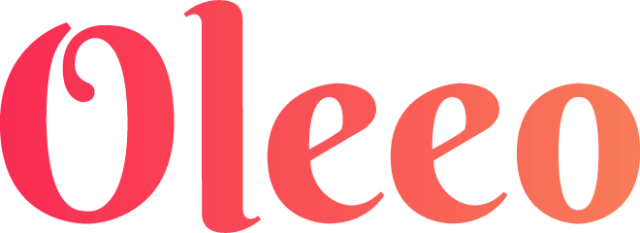7 Tips to Boost Your Employer Brand and Secure the Best Talent

The pandemic has changed the face of employment. As a result of constantly changing markets, candidate shortages, and fast-evolving virtual technologies, recruiters have had to adjust their hiring and onboarding processes. Simultaneously, job candidates are expecting more from employers. After feeling burnt out and receiving little to no benefits during the ongoing health crisis, candidates are refusing to settle.
So, what is a recruitment team to do?
The answer is to build a successful employer brand. In an extremely competitive hiring market, an attractive employer brand will make you stand out to top talent. Even better, it strengthens your reputation among your current employees.
In this article, we’ll cover everything you need to know about employer branding, including its benefits and the best strategies to use today.

What is Employer Branding?
An employer brand is how job seekers and internal employees perceive your organization. This perception includes your organization’s values, culture, people management, and uniqueness. Organizations with a strong employer brand are more likely to attract, hire, and retain candidates who, in turn, can become advocates for the brand. With 72% of recruiters believing that their company’s employer brand impacts hiring, the competition between companies is higher than ever.
However, an employer branding strategy is a long-term process. It should be ever-evolving as hiring and employee trends change over time. After candidates are hired and become employees, their perception of your brand will shift to how well they are treated, including opportunities to grow in their role.
Why Your Employee Brand Matters More Than Ever Before
An employer brand is essential because of ‘The Great Resignation’, the economic trend in which a large number of workers have quit their job for pastures new. The Great Resignation hit an all-time high in November 2021, reporting that 4.5 million workers resigned from their job. Many factors have led to this mass quitting. However, it’s mostly due to the COVID-19 pandemic, which enabled workers to reflect on their work conditions and pay.
Because of this trend, more job vacancies are open than qualified job seekers, leading to intense competition for talent. To appear more attractive, Many companies are offering flexible hours, more secure health benefits, higher pay, and a swifter recruitment process.
What’s more, recruitment staff are using advanced Applicant Tracking Systems (or ATS) that provide smoother automation, bulk processing, and a more personalized recruiting experience. Such technology also helps with large hiring volumes. Tools like these are essential to formulate a stronger employer brand and happier future employees.

Seven Top Tips to Improve Your Employer Brand
Fortunately, there are a handful of different employer brand strategies which will help you develop a stellar employee experience.
1. Define Your Company Culture
A top employer branding strategy is to focus on refining your company culture. Nearly Half Of Job Seekers say that company culture is very important when applying to a company. With the normalization of remote work and job seekers available all over the globe, it’s vital to think about company culture on a global scale.
There are many ways you can continue to cultivate your culture. First, re-evaluate your brand’s values, mission, and ethical standards. What makes your brand unique in terms of these factors? How does your team live and breathe the company’s values? After all, company culture should be reflected in every decision you make and every employee you have.
To portray your company culture to job seekers, consider doing the following:
- Dedicate a webpage to your culture: Create a web page that explains your values, beliefs, and goals – and how they tie in with your business.
- Go behind-the-scenes: Share pictures of your employees either on-the-job or taking part in fun work events or activities. Seeing the human side of a brand makes it more relatable.
- Incorporate job seekers into your culture: Consider bringing job seekers directly into the culture by offering virtual tours. This immersive experience will help job seekers picture working at your business.
2. Re-Examine Your Diversity and Inclusion (D&I) Practices
In line with company culture, it’s also a great idea to review your diversity and inclusion (D&I) practices. You can first look at your hard data with some questions in mind. Do you notice any trends in the number of diverse candidates who apply to your company’s job positions? How about the number who withdrew applications, who were rejected and accepted?
If you notice any gaps, it’s the perfect time to launch some Diversity Recruiting initiatives. For instance, you can take the time to speak with your current employees and let them share what diversity and inclusion mean to them. You can highlight these stories as part of your company culture, making it clear that your employer brand has a strong focus on D&I.
Additionally, you can re-read your job advertisements to erase any language that could be perceived as biased, such as gender-oriented language. Doing this helps to mitigate any legal risks related to diversity recruiting. Moreover, candidates who value diversity are more likely to be motivated to apply.

3. Demonstrate Authenticity
Many job seekers can sense when a company is inauthentic. For instance, if a company posts different job postings for various roles but uses much of the same language, it may demonstrate a lack of effort on the employer’s part.
Be as authentic and transparent as possible in your job postings and website to avoid this. Describe what the experience of working at your company is like for each role advertised. Avoid jargon or technical language. Instead, opt for a clear (human) tone. You can also include employee quotes and testimonies to add a genuine, personal touch.
4. Evaluate Your Hiring Strategies
Your hiring methods act as the first impression of your employer brand for new candidates. Ease-of-use is a big focus as well as how fast the application process goes. However, to truly stand out amid the competition, you can work with various departments across your company. For example, working with your marketing department to develop intriguing and appealing job postings across your social media pages could attract the candidates you’re looking for.
Millennials, in particular, prefer using social media to find potential jobs. In fact, 73% of them have reported securing a job on a social media site. Due to the popularity of these platforms, chances are your competitors are active on these sites, too. What’s especially beneficial about social media is the varying forms of media you can use, including photos and videos. Your marketing team has the chance to get creative and design innovative ways to target younger generations.
5. Use the Right Technology
Using advanced technology not only makes the recruiting process easier for you but can strengthen the relationships you have with job candidates. For instance, a candidate relationship management system, or CRM, can scale tailored communication with candidates. It does so by utilizing dynamic workflows and bulk processing to automate communication. Plus, it keeps job seekers engaged at the right time.
On your end, you can use Recruitment CRM to flag top talent, nurture your talent pool, and integrate the system with other HR tools you have in place.
Ensuring that your job candidates have a seamless and communicative experience with you from the start gives them a sure sign that working with your company will be just the same.

6. Analyze Your Metrics
As you create and implement your employer brand into both the recruiting process and your everyday company life, you’ll want to keep track of your metrics to ensure it has the proper influence. Luckily, there are many ways to measure your employer branding success, both with job seekers and your current employees.
For job candidates, keep track of the following:
- Number of applications
- Quality of applicants
- Job acceptance rate
- Source of applicants (e.g. social media)
- Cost per hire
For employees, measure:
- Amount of employee referrals
- Employee satisfaction scores (for instance, by using an NPS)
- Employee retention rate
- Employee internal feedback
- Employee feedback on external review sites
With these metrics, you can see what’s working and what may need improvement.
7. Keep Track of Trends In Your Field
Lastly, make sure to look for any trends in your market regarding employer branding. For instance, you can look at your competition to see what they’re doing in terms of job posts, social media posts, and company culture. If you see any effective strategies, you can use that as inspiration for your own branding. Again, the employer brand process should be ever-evolving.
Stand Out From The Competition
In a time like no other, an employer brand can make the difference between receiving an application or losing out to the competition. At the same time, formulating an employee brand gives you the chance to re-examine your brand, including what it stands for and the people who drive it forward.
Think about what you can offer job seekers in a time of uncertainty, and articulate these offers in a fresh, new, and exciting way. As a result, top talent will naturally be attracted to your company.



